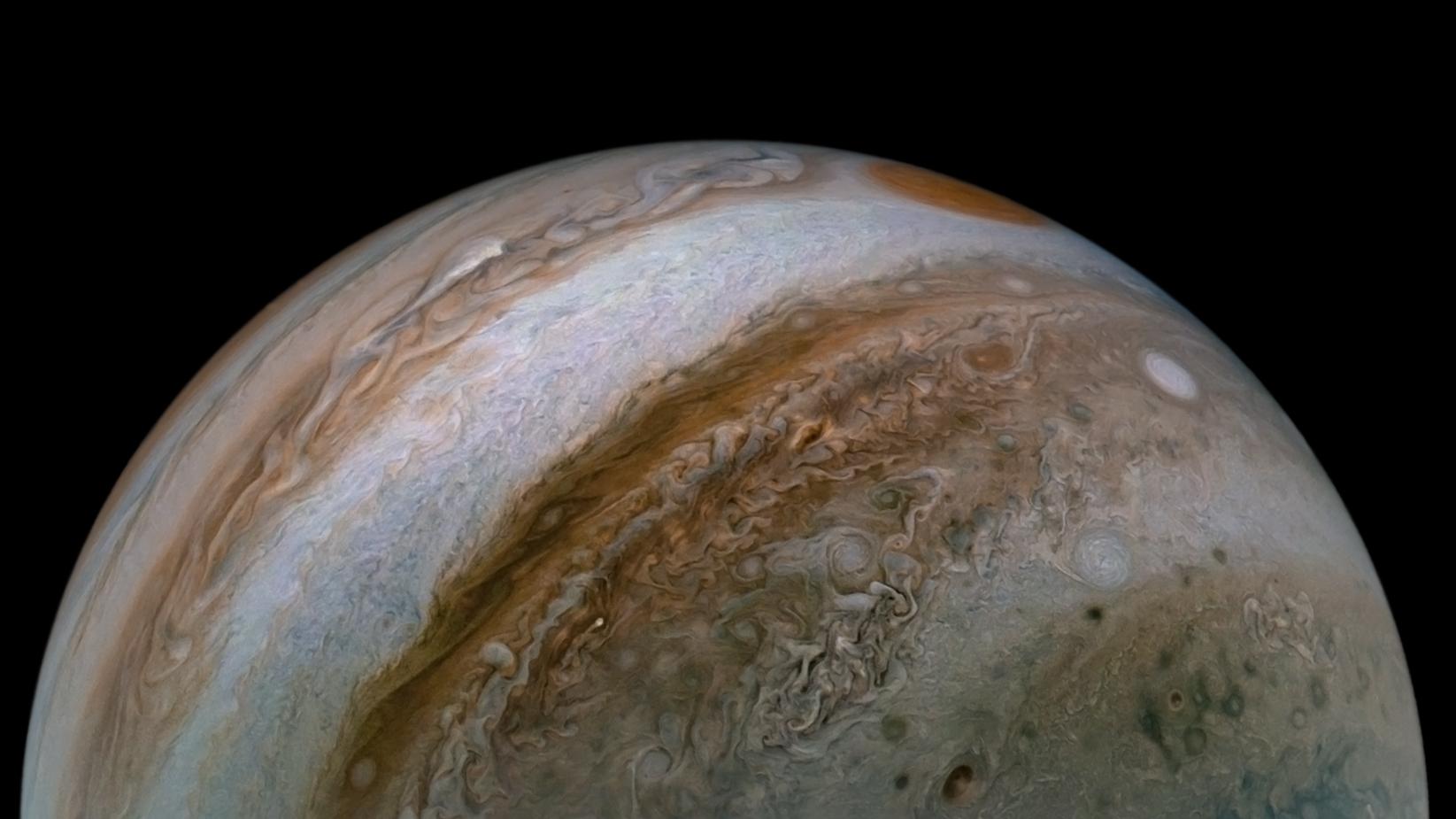
NASA will hold a virtual media briefing at 3 p.m. EDT Thursday, Oct. 28, to discuss the latest results from the agency’s Juno spacecraft. The science team will reveal new findings that provide the first 3D look at how the planet’s roiling atmosphere operates underneath the top layers of clouds, and how these revelations offer insight into the atmospheres of giant planets elsewhere in the universe.
The event will take place from NASA’s Jet Propulsion Laboratory in Southern California, which manages the Juno mission. It will be livestreamed on NASA Television, the NASA app, the agency’s website, NASA YouTube and Twitter.
Briefing participants include:
- Lucas Paganini, Juno program scientist, NASA Headquarters, Washington
- Scott Bolton, Juno principal investigator, Southwest Research Institute, San Antonio
- Marzia Parisi, Juno scientist, JPL
- Keren Duer, Juno scientist, Weizmann Institute of Science, Rehovot, Israel
- Leigh Fletcher, Juno participating scientist, University of Leicester, England
- Alessandro Mura, Juno co-investigator, Institute for Space Astrophysics and Planetology, Rome
To participate in the briefing by telephone, reporters must provide their name and affiliation no later than one hour before the start of the briefing to Rexana Vizza at: rexana.v.vizza@jpl.nasa.gov. Members of the media and the public may also ask questions on social media during the briefing using #JunoMission.
Juno has been orbiting and monitoring Jupiter since 2016. The spacecraft is now in an extended mission designed to expand on discoveries it already has made about Jupiter’s interior structure, internal magnetic field, atmosphere, and magnetosphere. It will also involve close passes of Jupiter’s north polar cyclones, future flybys of the moons Europa and Io, and the first exploration of the faint rings encircling the planet.
JPL, a division of Caltech in Pasadena, California, manages the Juno mission. Juno is part of NASA’s New Frontiers Program, which is managed at NASA’s Marshall Space Flight Center in Huntsville, Alabama, for the agency’s Science Mission Directorate in Washington. Lockheed Martin Space in Denver built and operates the spacecraft.
To learn more about Juno, visit:
-end-
Karen Fox / Alana Johnson
Headquarters, Washington
301-286-6284 / 202-358-1501
karen.c.fox@nasa.gov / alana.r.johnson@nasa.gov
Karolyn Pearson
Jet Propulsion Laboratory, Pasadena, Calif.
818-354-5011
karolyn.j.pearson@jpl.nasa.gov


























